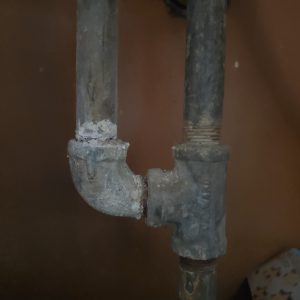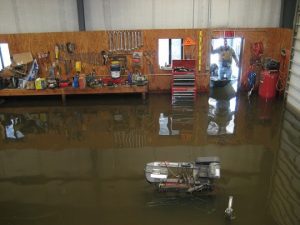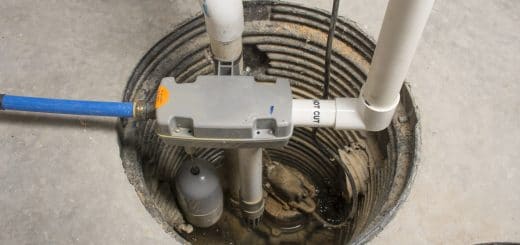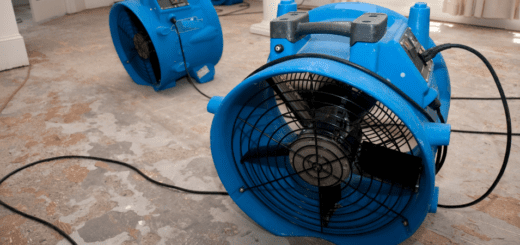Home Inspector Finds My Basement Had a Cat 3 Loss
Finding water damage on a home inspectionInspection is the careful examination and assessment of a pr... More report is often a very scary thing. Water damage is a common occurrence in homes. In fact, water damage emergencies affect nearly 14,000 people each day in the U.S. When the destruction is due to Category 3 water damage, the consequences are even more devastating. Here’s what to expect with this type of water source.
Why is previous home water damage a big deal?
A homeowner who faces water damage will also face a high repairRepair is the act of fixing or restoring damaged property, m... More bill—but especially if the water damage is Category 3 water damage. Water damage is classified into three categories, with the upper categories being the most severely contaminated.
Category 1 water is the cleanest and comes from sanitary sources, like water supply lines or snow. Category 2 water, such as water from a dishwasher or washing machine, contains contaminants that could cause sickness. Category 3 water is grossly contaminated.
Category 3 water (black water) comes from toilet overflows and sewageSewage is wastewater containing biological and chemical cont... More backups. FloodingFlooding is the overflow or accumulation of water in areas t... More, too, can be a source of Category 3 water damage. Storm water damage that results in floodingFlooding is the overflow or accumulation of water in areas t... More over the ground as well as rising floodwater from rivers and streams are examples of Category 3 water.
What are the three classes of black water damage?
Category 3 water damage can be further classified into three categories. Level 1 Category 3 water damage, like a toilet overflow, is limited to a small area and time frame. The damage originates from inside a property, is not absorbed into porousPorous describes a material that contains small openings or ... More materials and does not penetrate building materials.
Level 2 Category 3 water damage also develops inside the home. However, the levels of contaminationContamination is the presence of harmful or unwanted substan... More and loss are significantly higher. PorousPorous describes a material that contains small openings or ... More and nonporous materials are equally affected. Contaminated items, like cabinets, must be removed, and porousPorous describes a material that contains small openings or ... More goods, like carpets and upholstery, must be discarded.
Level 3 Category 3 water damage originates from outside the property. Water and waste from a septic system or main sewageSewage is wastewater containing biological and chemical cont... More line are examples of outside sources. Overflowing rivers and ocean storm surges also cause the highest levels of contaminationContamination is the presence of harmful or unwanted substan... More. Health hazards increase due to longer periods of contaminationContamination is the presence of harmful or unwanted substan... More.
What are the hazards of Category 3 water exposure?
Due to its severe levels of contaminationContamination is the presence of harmful or unwanted substan... More, Category 3 water is highly dangerous to people and pets. This type of water damage carries bacteria, moldMold is a type of fungus that grows in damp or humid conditi... More and virusesViruses are microscopic infectious agents that can only repr... More, including but not limited to salmonella, hepatitis, e. coli, enterovirus, giardia, helicobacter pylori, and clostridium tetani.
Diseases caused by exposure to the virusesViruses are microscopic infectious agents that can only repr... More and bacteria contained in Category 3 water include acute respiratory illnesses that can result in bronchitis, wheezing, or chest tightness. Tetanus is possible after exposure to clostridium tetani in black water. Hepatitis and gastroenteritis can also occur.
Time is critical when Category 3 water damages a home. SewageSewage is wastewater containing biological and chemical cont... More, for instance, will seep onto the floors and through the foundation. The black water is absorbed into building materials, like wood, drywall, carpeting, and concrete. The dirty water will travel behind walls and even enter the attic.
The black water damage must be cleaned up quickly, since the various pathogensPathogens are microorganisms such as bacteria, viruses, or f... More harbored in the water require few food sources to thrive: moisture, an organic food source (like drywall or wood), warm temperatures, and sufficient time to spread, such as hours or days.
Why should homeowners turn to experienced cleanup experts?
Cleaning up the Category 3 water damage is best left to experienced sewer damage cleanup professionals. Homeowners who attempt to clean black water risk cross-contaminationCross-contamination occurs when harmful substances, such as ... More, especially if the area is not contained, and could inadvertently contaminate other areas of the property.
Homeowners also face hazardous conditions when attempting to clean black water. The waterborne pathogensPathogens are microorganisms such as bacteria, viruses, or f... More in Category 3 water enter the human body through direct contact with the skin. It is also possible for people to breathe in contaminated air and become sick.
Mold colonies will flourish in the aftermath of Category 3 water damage, if left unaddressed. Using the wrong products, like bleach, can exacerbate the moldMold is a type of fungus that grows in damp or humid conditi... More problem. Experience and professional skill are a homeowner’s best weapons against the unwelcome effects of black water damage.
If the basement is flooded with Category 3 water damage, the homeowner is urged to consult a water damage restorationWater damage restoration is the professional process of clea... More company to clean up the mess. Black water is highly toxic and can result in illness or even death, especially when handled improperly.
Contacting a SewageSewage is wastewater containing biological and chemical cont... More Cleaning Company
Skilled water damage restorationWater damage restoration is the professional process of clea... More professionals arrive onsite with specialized equipment that pumps out the excess water safely and quickly. The experts are careful to contain the affected areas to avoid cross-contaminationCross-contamination occurs when harmful substances, such as ... More to other parts of the home. They also wear personal protective equipment.
A house inspector who finds that the basement had a Category 3 water damage should be satisfied if the area had been promptly cleaned by water damage restorationWater damage restoration is the professional process of clea... More professionals. Flood damage cleanup technicians clean, dry and fully sanitize the area so that it is safe to inhabit once again.
Category 3 water damage is an emergency situation and requires the attention of qualified water damage restoration professionals that provide thorough and quick sewageSewage is wastewater containing biological and chemical cont... More cleanup to area homes and businesses.
Water damage specialists will attack the Category 3 water damage with skill. They extract contaminated water from building materials and furnishings. Carpeting and upholstery damaged by black water will have to be removed and thrown out to protect the homeowner’s health and safety.
Professionals restore healthy environmental conditions by cleaning and disinfecting the affected spaces. Odors that result from the black water will likely permeateTo permeate is to pass through or spread throughout a materi... More the property, so specialists utilize powerful deodorization methods to ensure the air quality inside the home is returned to an optimum level.
DehumidificationDehumidification is the process of reducing and controlling ... More and dryingDrying is the process of removing moisture from materials, s... More are two key components of effective water damage cleanup processes. Professional efforts deter moldMold is a type of fungus that grows in damp or humid conditi... More growth and the further spread of water damage. If moldMold is a type of fungus that grows in damp or humid conditi... More colonies have already appeared, technicians will provide moldMold is a type of fungus that grows in damp or humid conditi... More removal services.












